On two distinct new albums, legendary composer Asmus Tietchens approaches different subject material with his current technique of recycling sounds beyond the point of any recognition. Schatten Ohne Licht (Shadow Without Light) is grounded in post-anthropological concepts influenced by scholar/writer Ulrich Horstmann's conceptualization of a planet devoid of biological life. Comparatively, Parallelen would seem focused on more theoretical mathematics and a greater sense of the abstract.
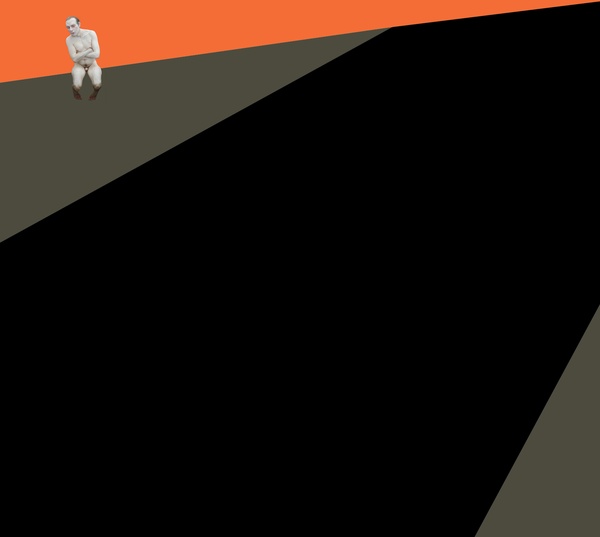 The opening title piece of Schatten Ohne Licht features Tietchens blending quiet tones with distant, low-end rumbles, with both the higher and lower frequencies layering and building throughout. Towards the half-way point he switches things around, using the same components but swapping around the arrangements, becoming a different sounding piece entirely. "Anthroporsaurus" follows a similar approach, pairing floating hints of melody with deep space pulsations and a machinery like chug, although the sum total of the parts is more delicate than anything else.
The opening title piece of Schatten Ohne Licht features Tietchens blending quiet tones with distant, low-end rumbles, with both the higher and lower frequencies layering and building throughout. Towards the half-way point he switches things around, using the same components but swapping around the arrangements, becoming a different sounding piece entirely. "Anthroporsaurus" follows a similar approach, pairing floating hints of melody with deep space pulsations and a machinery like chug, although the sum total of the parts is more delicate than anything else.
Later, "Es ist Endlich Still" (It's Finally Quiet) is a perfect example of the post-organic life themes of the album. High register crystalline sounds are joined with liquid, wet noise. Combining strange outbursts, flattened frequencies, and some occasional crackling, it sounds as empty and devoid of life as the title would insinuate. Closer "Kolosse" is an appropriately dramatic ending, all shimmering and looming space with chiming swells peppered throughout. As a whole it is more forceful and heavy compared to the other pieces on the disc, and results in a fitting climax for the album.



 On their second album this trio continues the sound of their 2018's self-titled debut, expanding the dense, continually flowing sound showcased there even further. Across three instrumentals (and one shorter vocal based song), More Klementines effortlessly jump between expansive improvised passages with taut, motorik rhythmic sections, resulting in a perfect junction of two very different styles.
On their second album this trio continues the sound of their 2018's self-titled debut, expanding the dense, continually flowing sound showcased there even further. Across three instrumentals (and one shorter vocal based song), More Klementines effortlessly jump between expansive improvised passages with taut, motorik rhythmic sections, resulting in a perfect junction of two very different styles. This is my first encounter with this UK-based improv unit, but Fallout 4 is the latest installment of a series of live documents that began all the way back in 2001. The band/collective itself has existed since 1996, though it seems like there's been at least one decade-long hiatus and the ensemble's members have all been active in other projects ranging from prog to ambient to art pop (while Andrew Ostler has been busy building modular synth hardware, among other things). Notably, Darkroom has recently reactivated and released some new material, but the performance documented here dates back to 2012 and the aesthetic lies somewhere between slow-burning Tarentel-style post-rock and Tangerine Dream-inspired space ambient (though Can was apparently a significant inspiration as well). On a related note, the album was mastered by Jono Podmore, who played a significant role in yet another fine vault project (Can's The Lost Tapes). I suspect Podmore had a challenging task on his hands, as the band tellingly state that he was chosen both for "his ability to control sonic forces" and "to make sure it was finally done." While this album and the Fallout series in general capture the band in a more noirish and shadowy mood than usual, I can see why they were so keen to get these recordings out into the world even a decade late, as much of this album is spacey, slow-motion psych magic.
This is my first encounter with this UK-based improv unit, but Fallout 4 is the latest installment of a series of live documents that began all the way back in 2001. The band/collective itself has existed since 1996, though it seems like there's been at least one decade-long hiatus and the ensemble's members have all been active in other projects ranging from prog to ambient to art pop (while Andrew Ostler has been busy building modular synth hardware, among other things). Notably, Darkroom has recently reactivated and released some new material, but the performance documented here dates back to 2012 and the aesthetic lies somewhere between slow-burning Tarentel-style post-rock and Tangerine Dream-inspired space ambient (though Can was apparently a significant inspiration as well). On a related note, the album was mastered by Jono Podmore, who played a significant role in yet another fine vault project (Can's The Lost Tapes). I suspect Podmore had a challenging task on his hands, as the band tellingly state that he was chosen both for "his ability to control sonic forces" and "to make sure it was finally done." While this album and the Fallout series in general capture the band in a more noirish and shadowy mood than usual, I can see why they were so keen to get these recordings out into the world even a decade late, as much of this album is spacey, slow-motion psych magic. This Chicago-based singer-songwriter is a bit of an enigma to me, as details about his discography are quite slim. As far as I can tell, however, 3am is his second solo album, which is noteworthy given that it has been 8 long years since Swan’s similarly excellent debut (I'll Be Around) surfaced. What he was up to during that hiatus is mostly unknown to me (aside from "drawing the night in around his private, unnerving vigil," of course), but one thing I do know is that he formed a duo with James Schimpl called Dead Bandit that released their debut on Quindi last year (the same label behind this album). In any case, 3am is one hell of an aptly titled album, as it very much has the feel of a hushed, late-night confessional via four-track. The overall aesthetic calls to mind the "desolate outsider folk" blurring of an insomniac Elliott Smith or Zelienople with the homespun intimacy of early Iron and Wine, yet the pervasive mood of late night sadness is beautifully balanced with cool production tricks and shades of more lively and eclectic influences like Suicide and Charlie Megira.
This Chicago-based singer-songwriter is a bit of an enigma to me, as details about his discography are quite slim. As far as I can tell, however, 3am is his second solo album, which is noteworthy given that it has been 8 long years since Swan’s similarly excellent debut (I'll Be Around) surfaced. What he was up to during that hiatus is mostly unknown to me (aside from "drawing the night in around his private, unnerving vigil," of course), but one thing I do know is that he formed a duo with James Schimpl called Dead Bandit that released their debut on Quindi last year (the same label behind this album). In any case, 3am is one hell of an aptly titled album, as it very much has the feel of a hushed, late-night confessional via four-track. The overall aesthetic calls to mind the "desolate outsider folk" blurring of an insomniac Elliott Smith or Zelienople with the homespun intimacy of early Iron and Wine, yet the pervasive mood of late night sadness is beautifully balanced with cool production tricks and shades of more lively and eclectic influences like Suicide and Charlie Megira. Keeping up with Andrew Chalk’s discography has always been an amusingly challenging endeavor, but the challenge has shifted from pouncing on limited edition physical releases to vigilantly ensuring that he does not quietly surface with a substantial new opus of some kind without my notice. The most recent substantial new opus is this one on Colin Potter’s ICR label, which is billed as Chalk’s “first new solo album in five years.” It certainly feels like a major statement to me, though the meaning of terms like “new” and “album” can be quite blurry and elusive given Chalk’s singularly minimalist approach to providing album details. In any case, The End Times was (perhaps prophetically) recorded earlier this year and marks a rare CD release after Chalk’s recent run of cassettes. Beyond that, further details are quite slim. That is just fine by me, as the only thing that actually matters is that Andrew Chalk is still making incredibly beautiful and distinctive music, as The End Times is a characteristically sublime and immersive dreamscape of tender melodies, elegantly shifting moods, and vividly detailed textures.
Keeping up with Andrew Chalk’s discography has always been an amusingly challenging endeavor, but the challenge has shifted from pouncing on limited edition physical releases to vigilantly ensuring that he does not quietly surface with a substantial new opus of some kind without my notice. The most recent substantial new opus is this one on Colin Potter’s ICR label, which is billed as Chalk’s “first new solo album in five years.” It certainly feels like a major statement to me, though the meaning of terms like “new” and “album” can be quite blurry and elusive given Chalk’s singularly minimalist approach to providing album details. In any case, The End Times was (perhaps prophetically) recorded earlier this year and marks a rare CD release after Chalk’s recent run of cassettes. Beyond that, further details are quite slim. That is just fine by me, as the only thing that actually matters is that Andrew Chalk is still making incredibly beautiful and distinctive music, as The End Times is a characteristically sublime and immersive dreamscape of tender melodies, elegantly shifting moods, and vividly detailed textures. Few artists have consistently fascinated and perplexed me quite like Oren Ambarchi, as I absolutely loved his early solo guitar albums like Grapes From the Estate, then witnessed him spend the next 15 or 20 years exploring improvisatory and rhythmic-driven detours to continually intensifying and breathless acclaim. I imagine it feels somewhat akin to being a Velvet Underground fan encountering unanimous rapturous praise for their post-Cale albums–I get the appeal, but that would not be my personal go-to era if I wanted to illustrate that band's greatness. Then again, maybe my perspective on Ambarchi's evolution would shift dramatically if I just liked jazz fusion more. In any case, I can certainly understand the unusual trajectory from Oren's viewpoint, as few would pass up a chance to form a trio with Jim O'Rourke and Keiji Haino and jamming with talented friends over mutant krautrock/fusion grooves seems like a hell of a lot more fun than making slow-motion guitar magic by yourself (can't fault a guy for loving spontaneity and challenging new collaborations). Both spontaneity and inspiring guest performances abound on Shebang, as Ambarchi enlisted quite a killer (virtual) ensemble, resulting in one of my favorite of his albums in recent memory (2016's Hubris being the other serious contender).
Few artists have consistently fascinated and perplexed me quite like Oren Ambarchi, as I absolutely loved his early solo guitar albums like Grapes From the Estate, then witnessed him spend the next 15 or 20 years exploring improvisatory and rhythmic-driven detours to continually intensifying and breathless acclaim. I imagine it feels somewhat akin to being a Velvet Underground fan encountering unanimous rapturous praise for their post-Cale albums–I get the appeal, but that would not be my personal go-to era if I wanted to illustrate that band's greatness. Then again, maybe my perspective on Ambarchi's evolution would shift dramatically if I just liked jazz fusion more. In any case, I can certainly understand the unusual trajectory from Oren's viewpoint, as few would pass up a chance to form a trio with Jim O'Rourke and Keiji Haino and jamming with talented friends over mutant krautrock/fusion grooves seems like a hell of a lot more fun than making slow-motion guitar magic by yourself (can't fault a guy for loving spontaneity and challenging new collaborations). Both spontaneity and inspiring guest performances abound on Shebang, as Ambarchi enlisted quite a killer (virtual) ensemble, resulting in one of my favorite of his albums in recent memory (2016's Hubris being the other serious contender). A noisy wall of sound is combined perfectly with atmospheric hooky tunes on this wonderful latest release from National Screen Service. I came across the 2017 release Hotels of the New Wave on Bandcamp, which caught my ears initially (however it is sadly seems no longer seems available from there). The project appears to have started in 2014 (Sea Level Trials can still be obtained from Bandcamp), and apart from being from somewhere in England, that's the extent of all I know of them (him? her?). To me it feels as if that mystery can genuinely make the music more engaging, allowing it to speak for itself while as listeners, we are free to engage the imagination. Released oddly (or tactfully) on the first Friday of October, A New Kind of Summer is a perfect warm summery album adaptable to other seasons.
A noisy wall of sound is combined perfectly with atmospheric hooky tunes on this wonderful latest release from National Screen Service. I came across the 2017 release Hotels of the New Wave on Bandcamp, which caught my ears initially (however it is sadly seems no longer seems available from there). The project appears to have started in 2014 (Sea Level Trials can still be obtained from Bandcamp), and apart from being from somewhere in England, that's the extent of all I know of them (him? her?). To me it feels as if that mystery can genuinely make the music more engaging, allowing it to speak for itself while as listeners, we are free to engage the imagination. Released oddly (or tactfully) on the first Friday of October, A New Kind of Summer is a perfect warm summery album adaptable to other seasons. Midnight Rocker borrows its title from the opening line of Massive Attack's "Safe From Harm," which was the lead song on their 1991 debut Blue Lines. Notably, that album was the beginning of Andy's recurring involvement with that project, but "Safe From Harm" is a curious song to revisit, as Andy did not sing on the original and it has a darker, more dramatic tone than the rest of Midnight Rocker. Given how wildly successful that album was, I imagine its inclusion here was a savvy choice, but its killer bass and tambourine groove plays far more to Sherwood's strengths than the lyrics and tone do to Andy's. The album's other trips down memory lane are a handful of contemporized resurrections from Andy's own sprawling discography such as "This Must Be Hell, "Materialist," and "Mr. Bassie." Of that lot, "Mr. Bassie" fares the best, as it boasts a strong melodic hook and wades into increasingly dubby territory as it unfolds.
Midnight Rocker borrows its title from the opening line of Massive Attack's "Safe From Harm," which was the lead song on their 1991 debut Blue Lines. Notably, that album was the beginning of Andy's recurring involvement with that project, but "Safe From Harm" is a curious song to revisit, as Andy did not sing on the original and it has a darker, more dramatic tone than the rest of Midnight Rocker. Given how wildly successful that album was, I imagine its inclusion here was a savvy choice, but its killer bass and tambourine groove plays far more to Sherwood's strengths than the lyrics and tone do to Andy's. The album's other trips down memory lane are a handful of contemporized resurrections from Andy's own sprawling discography such as "This Must Be Hell, "Materialist," and "Mr. Bassie." Of that lot, "Mr. Bassie" fares the best, as it boasts a strong melodic hook and wades into increasingly dubby territory as it unfolds. Back in 2009, Important Records released a landmark compilation entitled The Harmonic Series (A Compilation Of Musical Works In Just Intonation). Significantly, that album featured a Greg Davis piece entitled "Star Primes (For James Tenney)," which was Davis's earliest foray into composing using just intonation. Nearly a decade later, greyfade founder Joseph Branciforte found himself mesmerized by that piece on a long drive back home from Vermont and was inspired to contact Davis to discuss the unusual process behind the piece. As it turns out, Davis's interest in mathematical just intonation experiments ran quite deeply, as it formed the entire basis for his 2009 album Primes. Naturally, the enthusiastic Branciforte encouraged Davis to revisit his work in that vein, which led to an 8-channel performance at NYC's Fridman Gallery in 2019. The aptly titled New Primes is a reworking of that new material repurposed for a stereo home-listening experience. Needless to say, math-driven sine wave drones are not for everyone, but the cold and futuristic alien beauty of these pieces will likely resonate deeply with fans of otherworldly "ghost in the machine" opuses like Nurse With Wound's Soliloquy For Lilith.
Back in 2009, Important Records released a landmark compilation entitled The Harmonic Series (A Compilation Of Musical Works In Just Intonation). Significantly, that album featured a Greg Davis piece entitled "Star Primes (For James Tenney)," which was Davis's earliest foray into composing using just intonation. Nearly a decade later, greyfade founder Joseph Branciforte found himself mesmerized by that piece on a long drive back home from Vermont and was inspired to contact Davis to discuss the unusual process behind the piece. As it turns out, Davis's interest in mathematical just intonation experiments ran quite deeply, as it formed the entire basis for his 2009 album Primes. Naturally, the enthusiastic Branciforte encouraged Davis to revisit his work in that vein, which led to an 8-channel performance at NYC's Fridman Gallery in 2019. The aptly titled New Primes is a reworking of that new material repurposed for a stereo home-listening experience. Needless to say, math-driven sine wave drones are not for everyone, but the cold and futuristic alien beauty of these pieces will likely resonate deeply with fans of otherworldly "ghost in the machine" opuses like Nurse With Wound's Soliloquy For Lilith.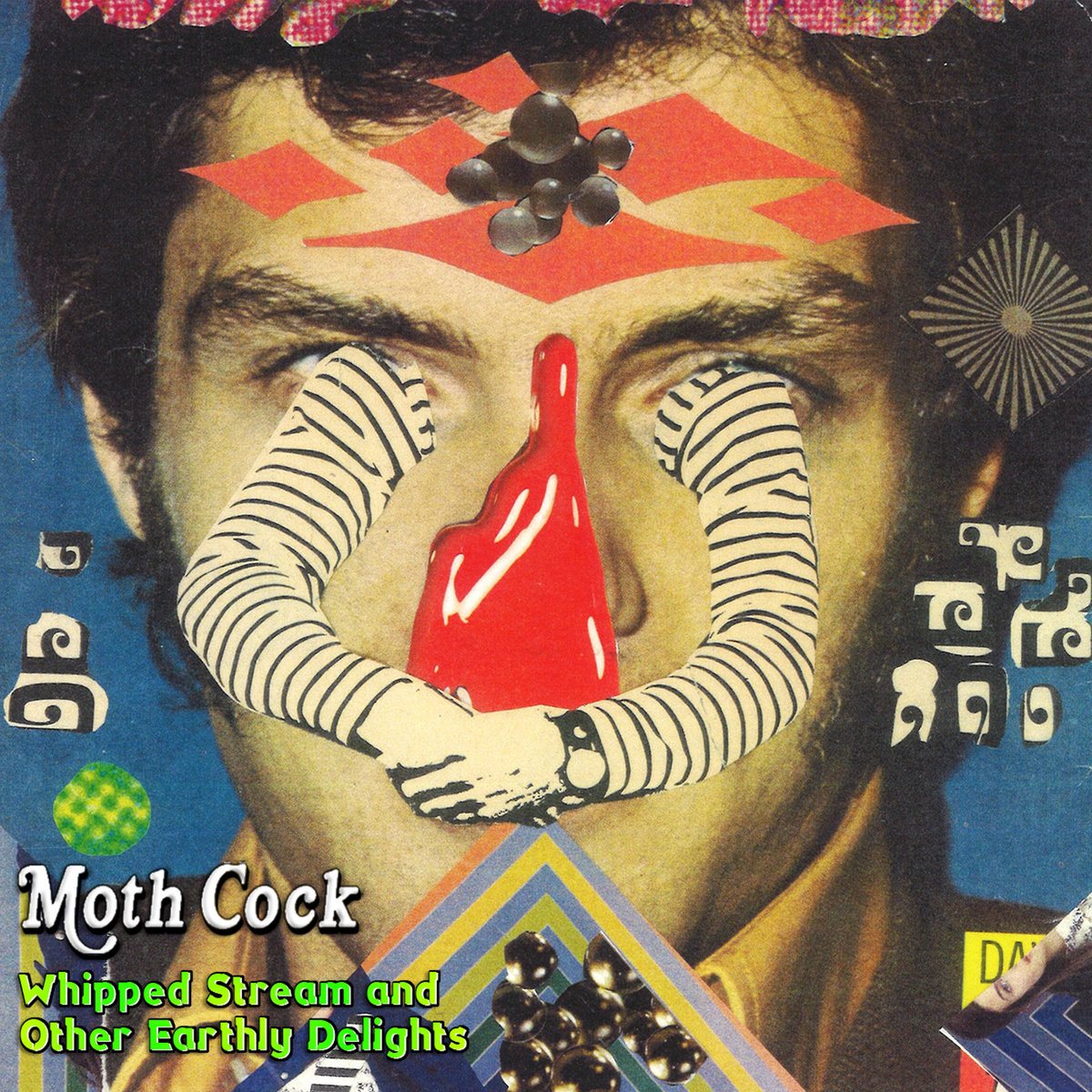 I doubt anyone can truly say that they know what to expect from a new Hausu Mountain release, but I still felt a bit gobsmacked by the latest from this ambitiously unhinged Ohio duo. While it may read like hyperbole to the uninitiated, the label's claim that Whipped Stream is a "durational smorgasbord of new music capable of knocking even the most seasoned zoner onto their ass" feels like an apt description of this triple cassette behemoth of fried and kaleidoscopic derangement (it clock in at roughly 3½ hours, after all). As I have not yet been lucky enough to experience Moth Cock's cacophonous sensory onslaught live, I was also a bit stunned to learn that most or all these pieces were culled from real-time performances. I honestly do not comprehend how two guys armed with a sax, loop pedals, and a "decades-old Electribe sampler / drum machine" can whip up such a vividly textured and wildly imaginative hurricane of sound so quickly and organically, as there seems to be some real hive mind shit afoot with these dudes. Unsurprisingly, I am at a loss to find a succinct description to explain what transpires over the course of this singular opus, but most of Whipped Stream can be reasonably described as a gnarled psychedelic freakout mashed together with Borbetomagus-style free jazz, the '80s noise tape underground, and jabbering sound collage lunacy. In the wrong hands, such an outré stew coupled with such an indulgent duration would be an effective recipe for total unlistenability, but I'll be damned if Moth Cock have not emerged from this quixotic endeavor looking like fitfully brilliant visionaries. I should add the caveat that Moth Cock also seem willfully annoying at times, but it is rare that such bumps in the road are not ultimately transformed into a near-perfect mindfuck or something unexpectedly sublime.
I doubt anyone can truly say that they know what to expect from a new Hausu Mountain release, but I still felt a bit gobsmacked by the latest from this ambitiously unhinged Ohio duo. While it may read like hyperbole to the uninitiated, the label's claim that Whipped Stream is a "durational smorgasbord of new music capable of knocking even the most seasoned zoner onto their ass" feels like an apt description of this triple cassette behemoth of fried and kaleidoscopic derangement (it clock in at roughly 3½ hours, after all). As I have not yet been lucky enough to experience Moth Cock's cacophonous sensory onslaught live, I was also a bit stunned to learn that most or all these pieces were culled from real-time performances. I honestly do not comprehend how two guys armed with a sax, loop pedals, and a "decades-old Electribe sampler / drum machine" can whip up such a vividly textured and wildly imaginative hurricane of sound so quickly and organically, as there seems to be some real hive mind shit afoot with these dudes. Unsurprisingly, I am at a loss to find a succinct description to explain what transpires over the course of this singular opus, but most of Whipped Stream can be reasonably described as a gnarled psychedelic freakout mashed together with Borbetomagus-style free jazz, the '80s noise tape underground, and jabbering sound collage lunacy. In the wrong hands, such an outré stew coupled with such an indulgent duration would be an effective recipe for total unlistenability, but I'll be damned if Moth Cock have not emerged from this quixotic endeavor looking like fitfully brilliant visionaries. I should add the caveat that Moth Cock also seem willfully annoying at times, but it is rare that such bumps in the road are not ultimately transformed into a near-perfect mindfuck or something unexpectedly sublime. This is apparently B. Fleischmann's eleventh solo album, which surprised me a bit, as I generally enjoy his work yet have only heard a small fraction of it. That said, the eclectic and shapeshifting Austrian composer's release schedule has slowed considerably since the heyday of IDM/indietronica/glitch pop in the late '90s/early 2000s that put him on the map. In fact, it has been four years since Fleischmann last surfaced with the amusingly titled but hopefully not prophetic Stop Making Fans and Music for Shared Rooms is actually more of a retrospective than a formal new statement. That said, most fans (myself included) are unlikely to have previously encountered any of the sixteen pieces collected here, as the album is a look back at some highlights from Fleischmann's extensive archive of pieces composed for film and theater. That archive apparently includes roughly 600 pieces composed over a stretch of twelve years, so Fleischmann presumably did not have much trouble coming up with a double LP worth of delights. To his credit, however, he decided to rework and recontextualize the selected pieces into a satisfying and thoughtfully constructed whole (and one that also doubles as a "kaleidoscopic glimpse of a forward-thinking musician at home in many different musical worlds"). Admittedly, some of those musical worlds appeal more to me than others, but Fleischmann almost always brings a strong pop sensibility and bittersweet warmth to the table, so the results are invariably wonderful when he hits the mark (which he does with impressive frequency here).
This is apparently B. Fleischmann's eleventh solo album, which surprised me a bit, as I generally enjoy his work yet have only heard a small fraction of it. That said, the eclectic and shapeshifting Austrian composer's release schedule has slowed considerably since the heyday of IDM/indietronica/glitch pop in the late '90s/early 2000s that put him on the map. In fact, it has been four years since Fleischmann last surfaced with the amusingly titled but hopefully not prophetic Stop Making Fans and Music for Shared Rooms is actually more of a retrospective than a formal new statement. That said, most fans (myself included) are unlikely to have previously encountered any of the sixteen pieces collected here, as the album is a look back at some highlights from Fleischmann's extensive archive of pieces composed for film and theater. That archive apparently includes roughly 600 pieces composed over a stretch of twelve years, so Fleischmann presumably did not have much trouble coming up with a double LP worth of delights. To his credit, however, he decided to rework and recontextualize the selected pieces into a satisfying and thoughtfully constructed whole (and one that also doubles as a "kaleidoscopic glimpse of a forward-thinking musician at home in many different musical worlds"). Admittedly, some of those musical worlds appeal more to me than others, but Fleischmann almost always brings a strong pop sensibility and bittersweet warmth to the table, so the results are invariably wonderful when he hits the mark (which he does with impressive frequency here). This first solo album from queer, androgynous soul singer Kyle Kidd is an incredibly strong contender for best debut of the year, but he/she/they (Kidd embraces all pronounds) has been been steadily releasing great music for a while as part of Cleveland's Mourning [A] BLKstar ensemble. Notably, however, Kidd's past also includes a background in church choirs as well as a stint as an American Idol competitor. Normally learning about the latter would send me running in the opposite direction, but Kidd joins the exclusive pantheon of vocal virtuosos like Ian William Craig and Zola Jesus lured away from a conventional trajectory by a healthy passion for more underground sounds. That said, a decent amount of Soothsayer legitimately feels like it could have burned up the Soul/R&B charts if it had been released in the late '70s and had a major label production team at the console. As time travel was not a viable option, Soothsayer instead found a home on the oft-stellar Chicago indie American Dreams and Kidd's sensuous, hook-filled songs eschew the polished sheen of pop production for a hypnagogic veil of tape hiss and reverb (much to my delight, predictably).
This first solo album from queer, androgynous soul singer Kyle Kidd is an incredibly strong contender for best debut of the year, but he/she/they (Kidd embraces all pronounds) has been been steadily releasing great music for a while as part of Cleveland's Mourning [A] BLKstar ensemble. Notably, however, Kidd's past also includes a background in church choirs as well as a stint as an American Idol competitor. Normally learning about the latter would send me running in the opposite direction, but Kidd joins the exclusive pantheon of vocal virtuosos like Ian William Craig and Zola Jesus lured away from a conventional trajectory by a healthy passion for more underground sounds. That said, a decent amount of Soothsayer legitimately feels like it could have burned up the Soul/R&B charts if it had been released in the late '70s and had a major label production team at the console. As time travel was not a viable option, Soothsayer instead found a home on the oft-stellar Chicago indie American Dreams and Kidd's sensuous, hook-filled songs eschew the polished sheen of pop production for a hypnagogic veil of tape hiss and reverb (much to my delight, predictably).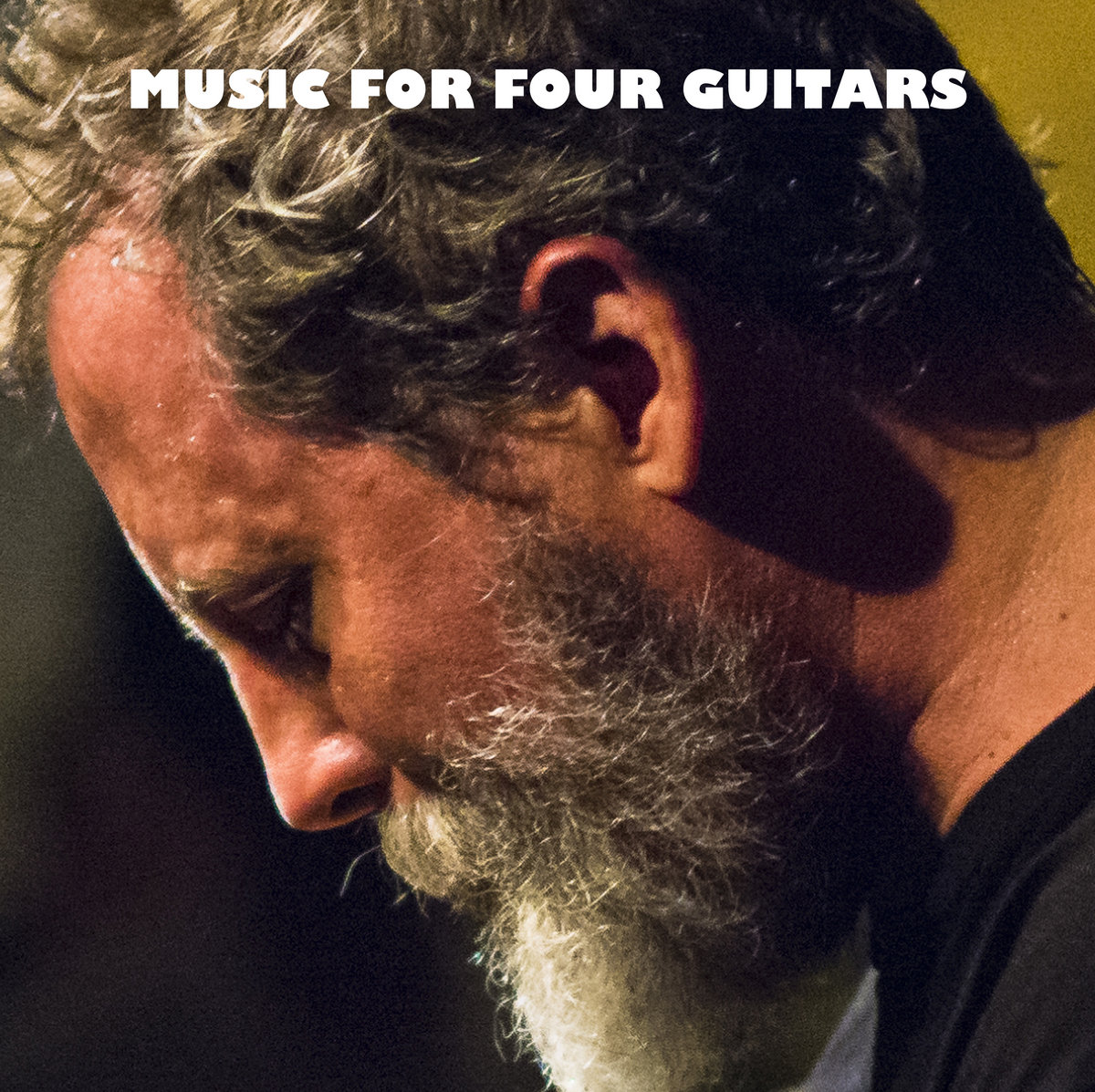 Over the last few years, it has become quite clear to me that any major new solo guitar album from Bill Orcutt is destined to be an inventive, visceral, and damn near essential release. Unsurprisingly, Music for Four Guitars does absolutely nothing to disrupt that impressive run, yet I sometimes forget that Orcutt has a restless creative streak that endlessly propels him both outward and forward like some kind of avant garde shark. As a result, his discography is full of wild surprises, unexpected detours, and challenging experiments such as last year's wonderfully obsessive and completely bananas A Mechanical Joey, so anyone who thinks they know exactly what to expect from a new Bill Orcutt album is either delusional or not paying close enough attention. Case in point: Music for Four Guitars feels like an evolution upon Orcutt's Made Out of Sound approach of using a second track to improvise against himself, but he now expands it to four tracks and shifts to a more composed, focused, and melodic approach very different from his volcanic duo with Chris Corsano. Notably, this project was originally intended for a Rhys Chatham-esque quartet of guitarists and has been gestating since at least 2015, but COVID-era circumstances ultimately led Orcutt to simply do everything himself. As Tom Carter insightfully observes in the album notes, this album is a fascinating hybrid of the feral spontaneity of Orcutt's guitar albums and the "relentless, gridlike composition" of his electronic music that often calls to mind an imaginary Steve Reich-inspired post-punk/post-hardcore project from Touch and Go or Amphetamine Reptile's heyday.
Over the last few years, it has become quite clear to me that any major new solo guitar album from Bill Orcutt is destined to be an inventive, visceral, and damn near essential release. Unsurprisingly, Music for Four Guitars does absolutely nothing to disrupt that impressive run, yet I sometimes forget that Orcutt has a restless creative streak that endlessly propels him both outward and forward like some kind of avant garde shark. As a result, his discography is full of wild surprises, unexpected detours, and challenging experiments such as last year's wonderfully obsessive and completely bananas A Mechanical Joey, so anyone who thinks they know exactly what to expect from a new Bill Orcutt album is either delusional or not paying close enough attention. Case in point: Music for Four Guitars feels like an evolution upon Orcutt's Made Out of Sound approach of using a second track to improvise against himself, but he now expands it to four tracks and shifts to a more composed, focused, and melodic approach very different from his volcanic duo with Chris Corsano. Notably, this project was originally intended for a Rhys Chatham-esque quartet of guitarists and has been gestating since at least 2015, but COVID-era circumstances ultimately led Orcutt to simply do everything himself. As Tom Carter insightfully observes in the album notes, this album is a fascinating hybrid of the feral spontaneity of Orcutt's guitar albums and the "relentless, gridlike composition" of his electronic music that often calls to mind an imaginary Steve Reich-inspired post-punk/post-hardcore project from Touch and Go or Amphetamine Reptile's heyday. In 1965, sixteen-year-old Isabel Baker stepped into a recording studio with some session musicians, and two days later emerged with what could be considered the very first Christian rockabilly album, if not the only one of its kind. I've never heard anything like it.
In 1965, sixteen-year-old Isabel Baker stepped into a recording studio with some session musicians, and two days later emerged with what could be considered the very first Christian rockabilly album, if not the only one of its kind. I've never heard anything like it. 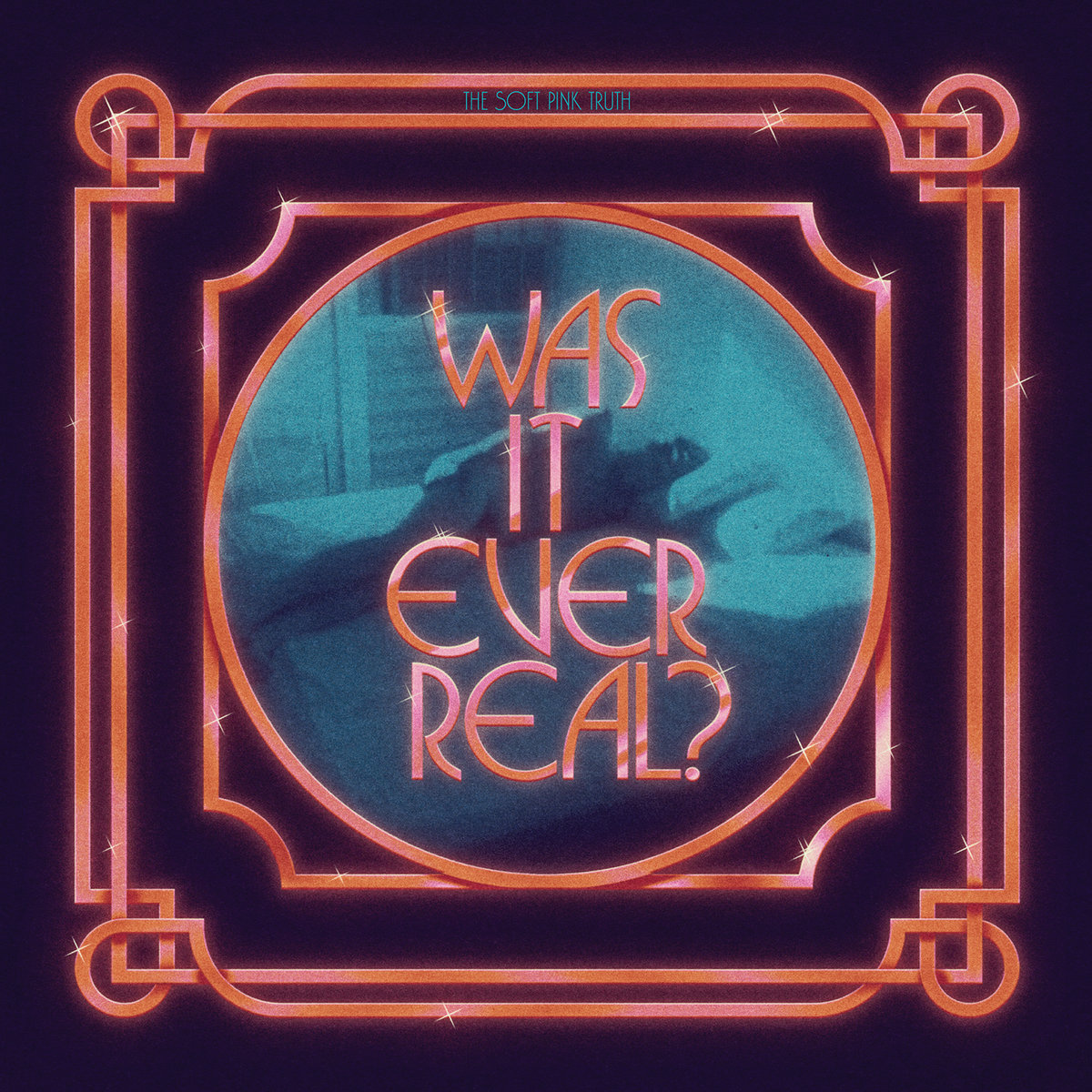 I had successfully deluded myself into thinking that I had spent my pandemic downtime wisely and constructively for the most part, but learning that Drew Daniel spent that same period assembling an all-star disco ensemble is now making me lament the sad limitations of my imagination and ambition. The resultant album—Is It Going to Get Any Deeper Than This?—is slated for release this October, but this teaser mini-album (part of Thrill Jockey's 30th anniversary campaign of limited/special releases) is one hell of a release in its own right and a true jewel in Daniel's discography. Naturally, the big immediate draws are the killer single "Is It Gonna to Get Any Deeper Than This (Dark Room Mix)" and a disco/deep house reimagining of Coil's classic "The Anal Staircase," but the other two songs are every bit as good (if not better) than that pair, so no self-respecting fan of Daniel's oeuvre will want to sleep on this ostensibly minor release (very few artists choose to release their best work on cassingle in 2022). Naturally, there is plenty of psychotropic weirdness mingled with all the great grooves, but I was still legitimately taken aback by how beautifully Daniels and his collaborators shot past kitsch/homage/pastiche and landed at completely functional, fun, and legit dance music. No one would raise a quizzical eyebrow if someone secretly slipped this album into the playlist at a party (not until "Anal Staircase" dropped, at least).
I had successfully deluded myself into thinking that I had spent my pandemic downtime wisely and constructively for the most part, but learning that Drew Daniel spent that same period assembling an all-star disco ensemble is now making me lament the sad limitations of my imagination and ambition. The resultant album—Is It Going to Get Any Deeper Than This?—is slated for release this October, but this teaser mini-album (part of Thrill Jockey's 30th anniversary campaign of limited/special releases) is one hell of a release in its own right and a true jewel in Daniel's discography. Naturally, the big immediate draws are the killer single "Is It Gonna to Get Any Deeper Than This (Dark Room Mix)" and a disco/deep house reimagining of Coil's classic "The Anal Staircase," but the other two songs are every bit as good (if not better) than that pair, so no self-respecting fan of Daniel's oeuvre will want to sleep on this ostensibly minor release (very few artists choose to release their best work on cassingle in 2022). Naturally, there is plenty of psychotropic weirdness mingled with all the great grooves, but I was still legitimately taken aback by how beautifully Daniels and his collaborators shot past kitsch/homage/pastiche and landed at completely functional, fun, and legit dance music. No one would raise a quizzical eyebrow if someone secretly slipped this album into the playlist at a party (not until "Anal Staircase" dropped, at least). There are several William Basinski albums that I absolutely love, but his various collaborations are rarely as compelling as his solo work (the leftfield Sparkle Division being a notable exception, of course). The fundamental issue is that Basinski's finest moments tend to be an intimate distillation of a single theme to its absolute essence, which does not leave much room at all for anyone else to add something without dispelling the fragile magic. While it is unclear if Janek Schaefer is unusually attuned to Basinski's wavelength or if the duo simply waited until the path to something lasting and beautiful organically revealed itself, I can confidently state that the pair ultimately wound up in exactly the right place regardless of how they got there. If I did not understand and appreciate the sizeable challenges inherent in crafting a hypnotically satisfying and immersive album from a mere handful of notes, I would be amused that Basinski and Schaefer first began working on this album together all the way back in 2014 and that the entire 8-year process basically resulted in just two or three simple piano melodies. In fact, I am still a little amused by this album's nearly decade-long gestation, but that does not make the result any less impressive. Significantly, " . . . on reflection " is dedicated to Harold Budd, but an even closer stylistic kindred spirit is Erik Satie (albeit a blearily impressionistic channeling of the visionary composer's work rather than any kind of straight homage).
There are several William Basinski albums that I absolutely love, but his various collaborations are rarely as compelling as his solo work (the leftfield Sparkle Division being a notable exception, of course). The fundamental issue is that Basinski's finest moments tend to be an intimate distillation of a single theme to its absolute essence, which does not leave much room at all for anyone else to add something without dispelling the fragile magic. While it is unclear if Janek Schaefer is unusually attuned to Basinski's wavelength or if the duo simply waited until the path to something lasting and beautiful organically revealed itself, I can confidently state that the pair ultimately wound up in exactly the right place regardless of how they got there. If I did not understand and appreciate the sizeable challenges inherent in crafting a hypnotically satisfying and immersive album from a mere handful of notes, I would be amused that Basinski and Schaefer first began working on this album together all the way back in 2014 and that the entire 8-year process basically resulted in just two or three simple piano melodies. In fact, I am still a little amused by this album's nearly decade-long gestation, but that does not make the result any less impressive. Significantly, " . . . on reflection " is dedicated to Harold Budd, but an even closer stylistic kindred spirit is Erik Satie (albeit a blearily impressionistic channeling of the visionary composer's work rather than any kind of straight homage). Previously based in Chicago, Steve Fors has build a small, but strong discography first as half of the duo the Golden Sores, and then on his own as Aeronaut. Now based in Switzerland, It's Nothing, but Still is his first full length solo work under his own name. It certainly feels like a new album, but traces of his previous projects can be heard, which is for the best. Lush with both beauty and darkness, it is nuanced and fascinating.
Previously based in Chicago, Steve Fors has build a small, but strong discography first as half of the duo the Golden Sores, and then on his own as Aeronaut. Now based in Switzerland, It's Nothing, but Still is his first full length solo work under his own name. It certainly feels like a new album, but traces of his previous projects can be heard, which is for the best. Lush with both beauty and darkness, it is nuanced and fascinating.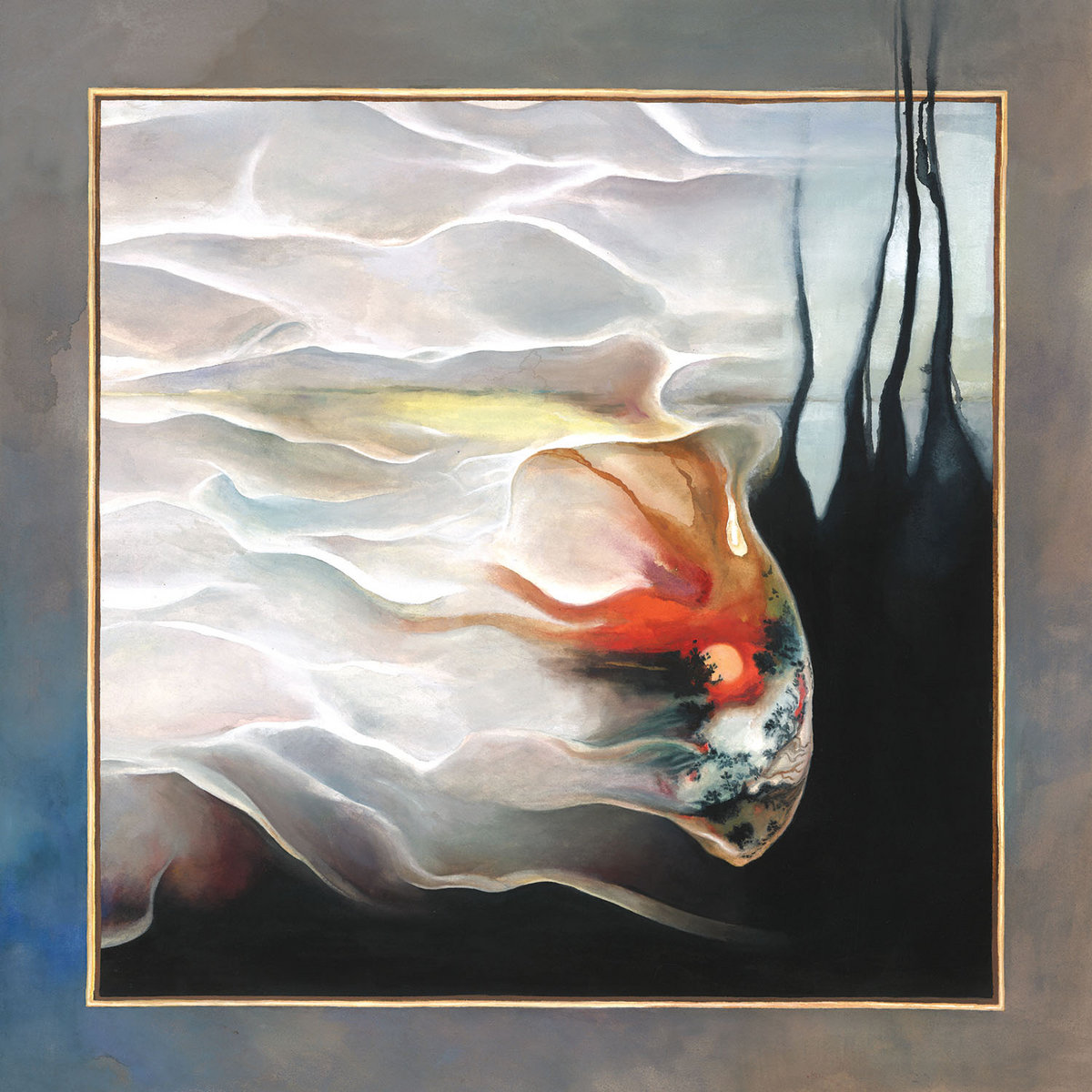 Ten years after her first appearance on Keith Rankin and Seth Graham's perennially bizarre and eclectic Orange Milk label , Paul returns to the fold with her new trio. Naturally, there are plenty of similarities between this latest release and the trio's 2020 debut (Ray), but there has been some significant evolution as well. To my ears, I Am Fog feels considerably more sketchlike and challenging than Ray, but that is not necessarily a bad thing, as anyone seeking out an Ashley Paul album would presumably already have a healthy appreciation for dissonance and deconstruction. A decent analogy might be that Ray is like a short story collection while I Am Fog is more like a series of poems: the voice and vision are instantly recognizable, but these nine pieces are an unusually distilled, minimal, and impressionistic version of that voice. In less abstract terms, that means that I Am Fog again sounds like some kind of unsettling and psychotropic outsider cabaret, but the emphasis is now more upon gnarled/strangled textures and lingering uncomfortable harmonies than it is on melodic hooks and broken, lurching rhythms. In addition to the trio's overall step even further into the outré, the album also features further enticement with one of Paul's strongest "singles" to date ("Shivers").
Ten years after her first appearance on Keith Rankin and Seth Graham's perennially bizarre and eclectic Orange Milk label , Paul returns to the fold with her new trio. Naturally, there are plenty of similarities between this latest release and the trio's 2020 debut (Ray), but there has been some significant evolution as well. To my ears, I Am Fog feels considerably more sketchlike and challenging than Ray, but that is not necessarily a bad thing, as anyone seeking out an Ashley Paul album would presumably already have a healthy appreciation for dissonance and deconstruction. A decent analogy might be that Ray is like a short story collection while I Am Fog is more like a series of poems: the voice and vision are instantly recognizable, but these nine pieces are an unusually distilled, minimal, and impressionistic version of that voice. In less abstract terms, that means that I Am Fog again sounds like some kind of unsettling and psychotropic outsider cabaret, but the emphasis is now more upon gnarled/strangled textures and lingering uncomfortable harmonies than it is on melodic hooks and broken, lurching rhythms. In addition to the trio's overall step even further into the outré, the album also features further enticement with one of Paul's strongest "singles" to date ("Shivers"). Jeff Barsky has been quietly releasing alternately sublime and noise-ravaged guitar albums for years and this latest album finds him returning to LA's oft ahead-of-the-curve Already Dead Tapes (where he last surfaced with 2015's Flickering). Normally, I would not describe an edition of 100 tapes as a major release, but most of Barsky's solo work has historically appeared on his own Insect Fields imprint so Celestial Cycles will likely reach more ears than usual. Fittingly, it is an especially strong album, capturing Barsky at the absolute height of his powers. While few solo guitarists can summon dreamlike beauty from their ax as reliably and masterfully as Barsky, the centerpiece of this album is unquestionably the swirling and nightmarish closing epic "Become The Birds," which arguably recaptures the magic of Campbell Kneale's Birchville Cat Motel project in its prime (which is damn high praise coming from me).
Jeff Barsky has been quietly releasing alternately sublime and noise-ravaged guitar albums for years and this latest album finds him returning to LA's oft ahead-of-the-curve Already Dead Tapes (where he last surfaced with 2015's Flickering). Normally, I would not describe an edition of 100 tapes as a major release, but most of Barsky's solo work has historically appeared on his own Insect Fields imprint so Celestial Cycles will likely reach more ears than usual. Fittingly, it is an especially strong album, capturing Barsky at the absolute height of his powers. While few solo guitarists can summon dreamlike beauty from their ax as reliably and masterfully as Barsky, the centerpiece of this album is unquestionably the swirling and nightmarish closing epic "Become The Birds," which arguably recaptures the magic of Campbell Kneale's Birchville Cat Motel project in its prime (which is damn high praise coming from me).  I only recently heard Laura Cannell’s fabulous album The Earth With Her Crowns from 2020 and could easily spend 500 words praising its dazzling allure and stark—yet comforting—beauty. Time marches on, though, and since she already has two new releases in 2022 I am focusing on the present year. Both are excellent but, of the two, I am most immediately impressed by Antiphony, wherein Cannell uses alto, bass, and tenor recorders to riff on the birdsong of rural Suffolk , where she lives, which called to her amid the quietness of lockdown. It is riveting and a work that I am unlikely to set aside any time soon.
I only recently heard Laura Cannell’s fabulous album The Earth With Her Crowns from 2020 and could easily spend 500 words praising its dazzling allure and stark—yet comforting—beauty. Time marches on, though, and since she already has two new releases in 2022 I am focusing on the present year. Both are excellent but, of the two, I am most immediately impressed by Antiphony, wherein Cannell uses alto, bass, and tenor recorders to riff on the birdsong of rural Suffolk , where she lives, which called to her amid the quietness of lockdown. It is riveting and a work that I am unlikely to set aside any time soon. 
